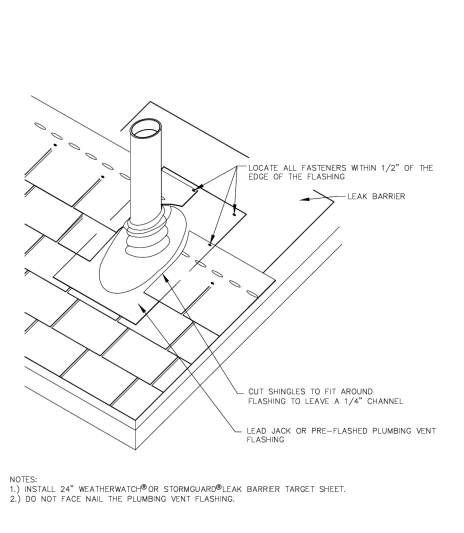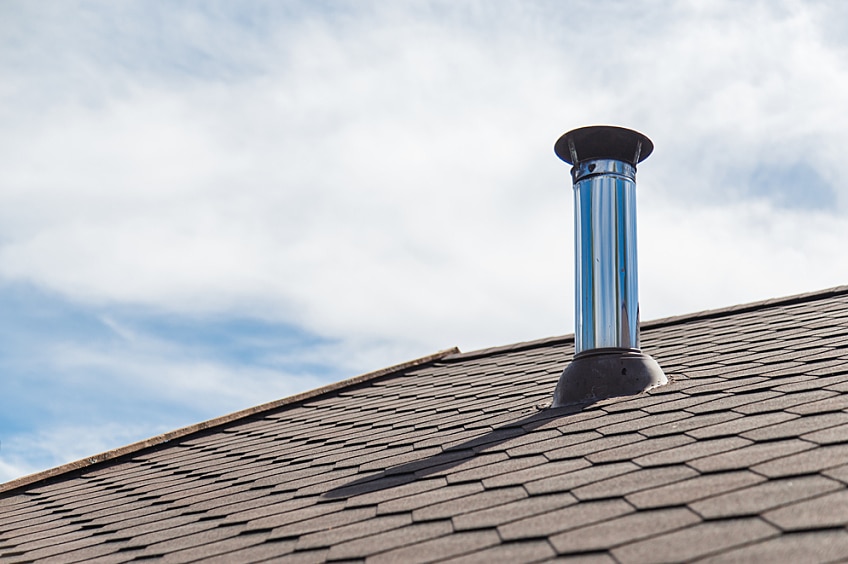When a leak occurs on a roof, the first place to look is the flashing. The areas around pipes, chimneys, and other protrusions on a roof could be the culprits, so it's important to know how to correctly flash a pipe — otherwise, you may subject the roof to a potential leak or larger damage to the structure.
Plumbing flashing is one of the most common leak areas, and the issue usually occurs from poor workmanship, improper materials, or just bad installation. It could also be a combination of all three. Here are some ways to flash a pipe to ensure the roof will be kept watertight.
For the underlayment:
- Install roof deck protection. These products provide an extra layer of protection and help to prevent wind-driven rain or any other water source from getting under your shingles and causing damage to the structure and inside the home.
- Cut a minimum 20" square piece of leak barrier.
- Center over the top of the pipe and cut an "x."
TIP: Cut the "x" slightly smaller than the pipe to provide a tighter seal. - Remove film.
- Lower around pipe.
- Press firmly to the roof deck protection.
For the shingles themselves:
- Bring the shingles to the bottom of the vent pipe. It may be necessary to cut a little bit of the shingle head lap around the pipe.
TIP: The center of the shingle should be below the pipe for the flashing to work properly. - Install pipe flashing.
- Cut shingles in the succeeding courses to fit around the base and apply a bead of sealant between the base and the overlaying shingles.
TIP: Leave ¼" space between the shingle and the side of pipe base.

Depending on how the shingles lay out, there may be more than half of the upper shingle over the flange. The top shingle's bottom edge should extend, at the least, to the bottom of the hole cut in the roof deck. Any less may lead to leaking.
When the pipe boot is installed correctly, the flanges should be sitting flat on the shingles and there should be no need for any sealant. Sealant should not be applied, if possible, as some roof cements and caulks can run or blister the shingles if too much is used. Also, some vents may be made with plastic and/or have a rubber gasket. In those cases, roof cement should be avoided altogether as the plastic and the rubber may prematurely degrade.
Additionally, the inappropriate use of any sealant may trap water, which can back up under the shingles and boot, causing a leak. By following these tips, you can help ensure the roof can fend off the elements.
To learn more about roof installation and increase your skills, go to the GAF Center for the Advancement of Roofing Excellence (CARE) page to find an upcoming online or in-person training course.

